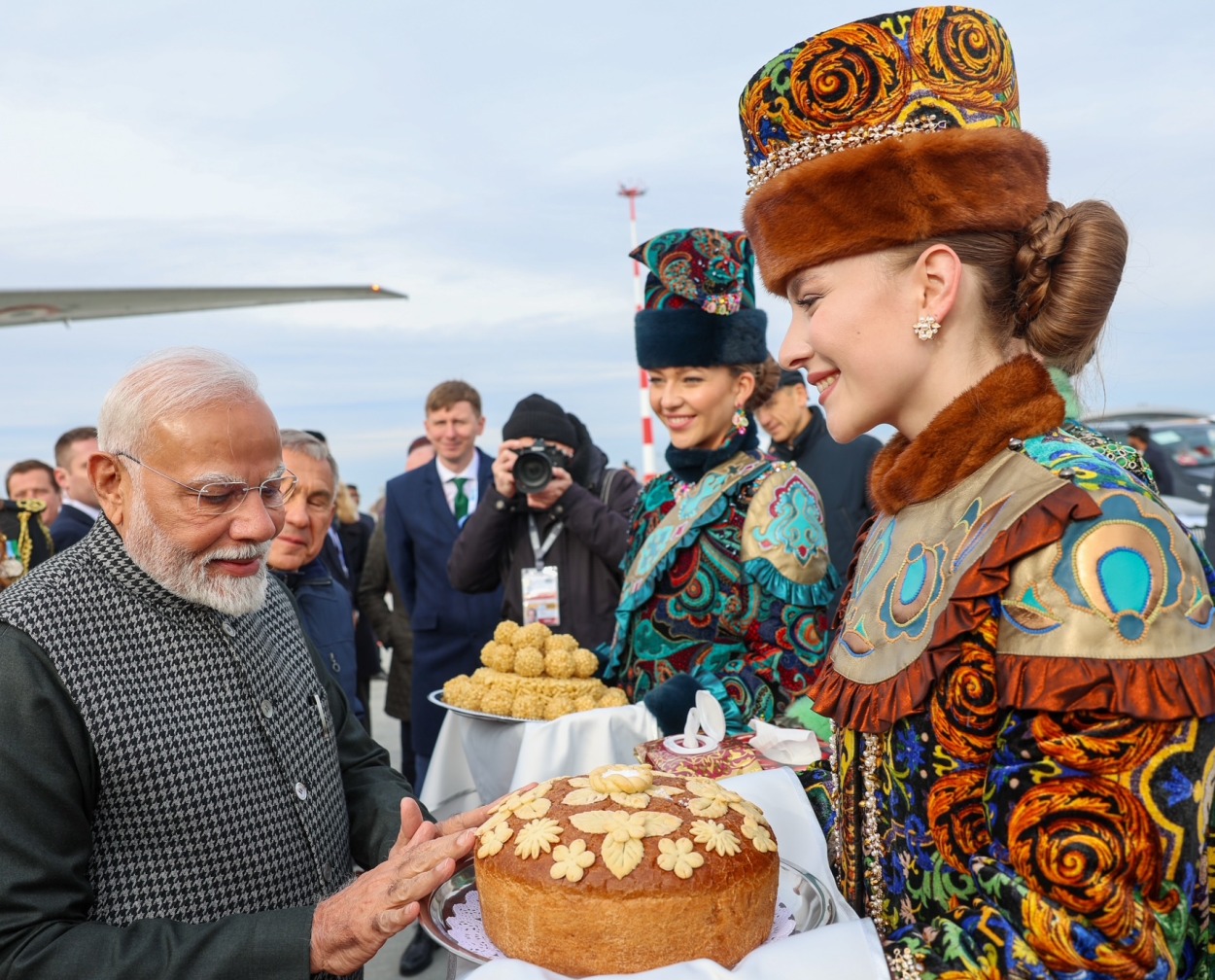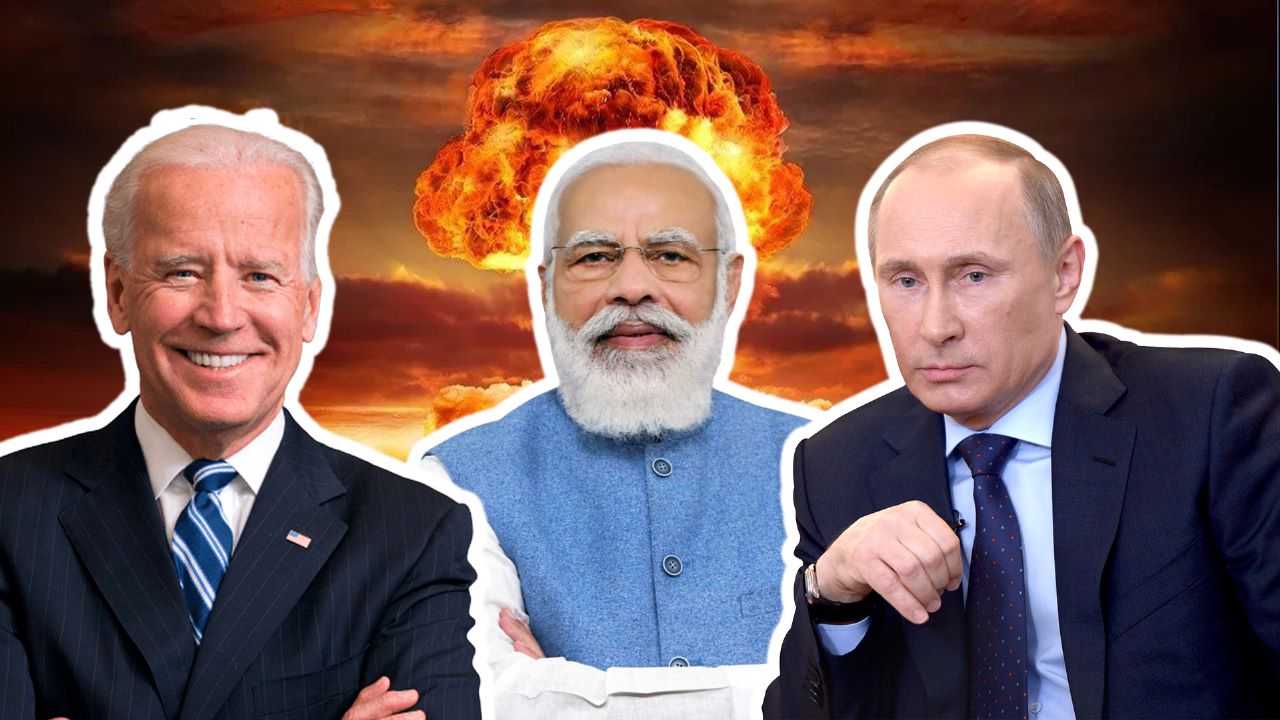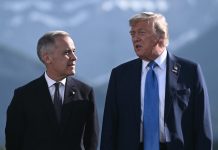There are two ways of looking at India and China agreeing to end the 54-month-old military standoff in eastern Ladakh and resume joint patrolling along the Line of Control in the disputed border areas so as to maintain peace and tranquillity.
The convenient way is to describe it as an important prelude to the top leaders of India, China, and Russia meeting during the 16th BRICS summit in Russia (September 22-23).
In fact, this “highly positive development” took place on the eve of Indian Prime Minister Narendra Modi’s departure for the Kazan summit. There, he will interact with Russian President Vladimir Putin, and there is every possibility of him meeting Chinese President Xi Jinping separately on the sidelines of the summit.
“Building upon the Annual Summit held in July 2024 in Moscow, my visit to Kazan will further reinforce the Special and Privileged Strategic Partnership between India and Russia”, Modi said this morning (September 22) while departing for Russia. He did not say anything about China or Xi, but reports suggest that there will be parleys now that such an important breakthrough has taken place in Ladakh.
India-China Breakthrough: A Message To USA?
But there is another way that the Ladakh-breakthrough could be seen. And that could be conveying a strong message to the United States that India has the option of reconsidering its otherwise growing ties with Washington, given the way the primacy is being given to the Khalistani terrorists in dictating the contours of Indo-US relations, along with the narratives that India under Modi is becoming an autocratic country without any religious freedom.
Perhaps not enough attention is given to the fact that there have been occasions when India wanted to be closer to the U.S., but the rebuffs it received from the latter pushed it closer to Moscow.
U.S. diplomat and author Dennis Kux’s book, “India and the United States: Estranged Democracies,” documents the tortuous strategic relationship between the United States and India between 1947 and the early 1990s, despite the two sharing concerns about communism, Islamic fundamentalism, ideals of democracy, liberalism, and pluralism.
Given their similarities, India and the U.S. could have been “natural partners” in more than one sense. But if that has not happened, it is more due to the U.S. not proving itself to be a dependable friend.

Significantly, if one reads the CIA’s highly “secret” documents on “Indo-Soviet Relations that were declassified in 2008, it becomes apparent that the then Soviet Union was always treated with suspicion by India’s two Prime Ministers – Jawaharlal Nehru and Indira Gandhi.
These declassified documents show how Indian communists, who supported the Soviet Union, actively and violently opposed the Nehru government.
Up until the 1950s, Indo-Soviet relations were limited to trade, cultural, and diplomatic exchanges. Things changed after Nehru’s visit to Moscow in 1955 at the invitation of Nikita Khrushchev. But that was the time when the United States wooed Pakistan to become a member of the CENTO and SEATO military alliances. Washington did not support India in the United Nations on the issue of Kashmir, which Moscow readily did.
CIA documents say that India did not like Moscow’s so-called neutral role during the India-China conflict. In fact, Indo-US relations improved substantially between 1962 and 1965.
In those three years, the United States provided India with both grant assistance and military sales. But all this came to a halt with the 1965 India-Pakistan war. Predictably, Moscow took advantage of it, though New Delhi thought that it was being forced to cease-fire to end the war to establish Moscow as a “peace-maker.”
CIA has also revealed how India resented the then USSR’s military cooperation with Pakistan following the Indo-Pak War and Soviet maps showing disputed Himalayan border areas as Chinese, not Indian, territories.
Understandably, India did not respond to Russian leader Leonid Brezhnev’s proposal for “Asian Collective Security” and agreed only to the bilateral Indo-Soviet Treaty of Friendship and Cooperation in 1971, mostly due to Pakistani actions in Bangladesh, which were supported by the United States.
The point that emerges is that there has been a strong linkage between New Delhi-Washington and New Delhi-Moscow relations. Whenever two democracies were estranged, New Delhi came closer to Moscow, and this was reflected in the economic ties, too.
For instance, as the late U.S. Ambassador John Kenneth Galbraith clearly mentioned in his “Ambassador’s Journal,” the famous Bokaro Steel Plant that Russia helped to establish in Jharkhand state was supposed to be built with American aid and collaboration for which he had convinced President Kennedy.
On May 10, 1963, he wrote, “The President came out strongly on the side of helping the Indians build the Bokaro steel plant, and he said it should be supported in the public sector. It was a marvelous, no-nonsense statement.”
However, when after Kennedy’s assassination in November of that year, the U.S. Congress refused to finance the building of the plant; it went to the USSR, which started building it in 1964.
One could argue that the Cold War years saw more downs than ups in relations between India and the U.S. After the end of the Cold War in the 1990s, the relationship has seen more ups than downs, be it in the areas of security, space, technologies, trade, or common global issues.

America’s nearly 5 million-strong Indian-origin diaspora is now well integrated into American politics, administration, and business, with an Indian-origin candidate in the running for President.
However, the last few months have seen a carefully orchestrated narrative in the United States, to which American policymakers, civil servants, and intelligentsia are parties, that projects India to be an enemy country that is after the lives of American citizens.
India is being projected as a country where democracy is doomed. So much so that American courts would not mind now arresting India’s National Security Advisor if he visits the U.S. And getting the clue, American satellite state Canada expels Indian diplomats on the spurious ground that they were on the killing mission of “Canadian nationals.”
Who are these “citizens”? They are a bunch of hard-core terrorists who want to break India’s unity and integrity and establish a separate country called Khalistan. Their leader, Guruwant Singh Pannun (a dual citizen of the U.S. and Canada), has threatened to bomb Air India flights and kill non-Sikh Indians and diplomats.
If, for the United States (or, for that matter, Canada), the lives of Khalistanis (who are said to be facing manufactured, not real, threats by ‘Indian agents”) are dearer than the partnership of a country like it, then let it be.
They need to be told that India can do business with Russia and China, which the Americans perceive as their existential threats. India seems to have been pushed by them to do this.
- Author and veteran journalist Prakash Nanda is Chairman of the Editorial Board of the EurAsian Times and has been commenting on politics, foreign policy, and strategic affairs for nearly three decades. He is a former National Fellow of the Indian Council for Historical Research and a recipient of the Seoul Peace Prize Scholarship.
- VIEWS PERSONAL OF THE AUTHOR
- CONTACT: prakash.nanda (at) hotmail.com
- Follow EurAsian Times on Google News




